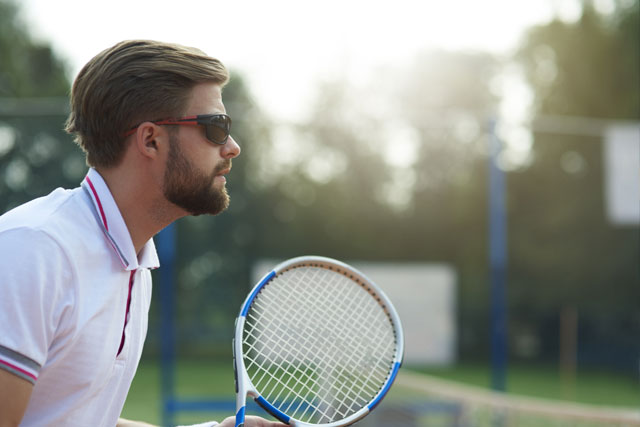Posted by: Eye Specialists of Mid Florida in Blog

Written by Thomas Hegland, O.D.
Board Certified Optometric Physician
A number of years ago, an NFL lineman, Orlando Brown, was temporarily blinded in one eye after being hit with a referee’s penalty flag. Mr. Brown was wearing his helmet at the time of the incident, which had a very extensive face-mask, but it did not protect him adequately. Most sports-related eye injuries are not reported to the extent of Mr. Brown’s, which happened during a televised NFL game, but they do happen almost daily. These incidents involve activities ranging from professional athletics to the occasional golfer. These types of injuries include foreign bodies whether thrown, blown, or fragmented into the eye; painful corneal abrasions or lacerations of the eyelids or the eye itself; blunt force trauma from rackets, balls, etc.; and even chemicals ranging from simple sunscreen to disinfectants or cleaning fluids.
The American Academy of Ophthalmology has designated April as Sports Eye Safety Month. We at Eye Specialists of Mid-Florida agree that most of the eye injuries that occur in sports or play can be prevented by merely wearing the correct form of eye protection for the specific sport or activity you are participating in. ASTM International is an international safety and security standards organization that develops voluntary technical standards for a wide range of materials and products. A few of these specific standards can be found below.
ATSM Safety Recommendations:
Eye Safety for Sports
Designation Title
F659 – 10 Standard Specification for Ski and Snowboard Goggles
F803 – 14 Standard Specification for Eye Protectors for Selected Sports
F1776 – 16 Standard Specification for Eye Protective Devices for Paintball Sports
F2713 – 14 Standard Specification for Eye Protectors for Field Hockey
F2812 – 12 Standard Specification for Goggle- and Spectacle-Type Eye Protectors for Selected Motor Sports
F2879 – 16 Standard Specification for Eye Protective Devices for Airsoft Sports
F3077 – 14 Standard Specification for Eye Protectors for Women’s Lacrosse
Generally speaking, if your child is wearing spectacles the lenses should be made from high impact polycarbonate plastics for day-to-day protection. When your activity is outdoors, simply wearing a quality pair of polarized sunglasses protects the eyes from excess UV exposure and even sunburn.
All organized sporting events should have an adequate First Aid Kit available. This should contain, at a minimum, a plastic eye shield and a bottle of FRESH eye wash. In cases of dust, dirt, or other foreign bodies entering the eye, you should flush the eye with the eye wash or a bottle of artificial tears if available. If neither is available, water from a hose or sink will suffice. Chemicals in the eye can be treated in the same manner, but with increased volume and time of flushing. In cases of eye trauma, apply a cold compress or ice pack gently (without pressure) over the area of trauma. Seek prompt medical attention to rule out internal damage to the eye or surrounding tissues. Any laceration of the eyelid or the eye itself needs application of the eye shield and immediate medical attention.
Taking precautions and utilizing the proper equipment will allow you to enjoy your active lifestyle and stay safe.
